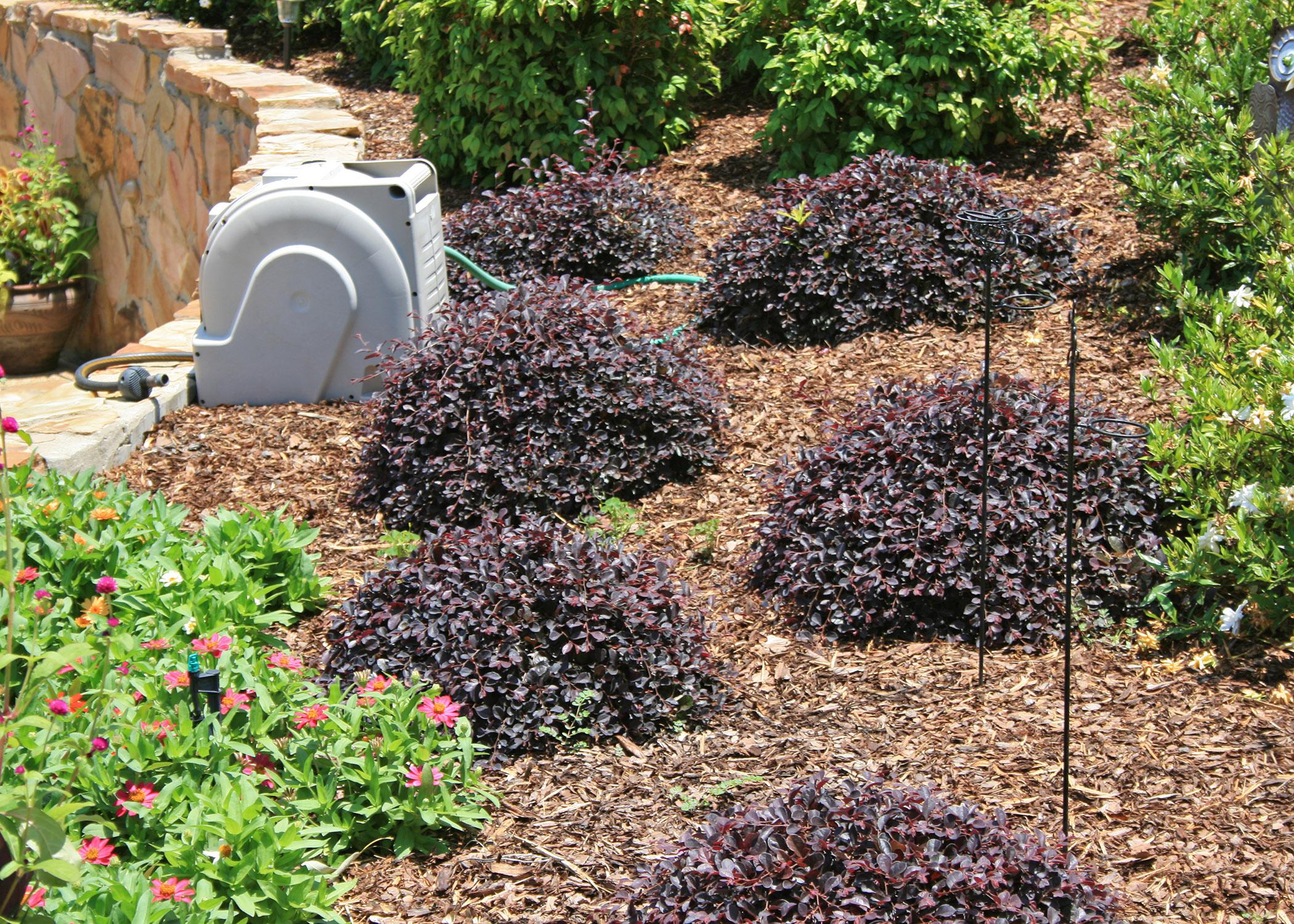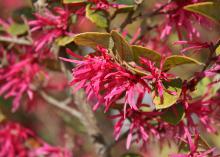Information Possibly Outdated
The information presented on this page was originally released on January 5, 2015. It may not be outdated, but please search our site for more current information. If you plan to quote or reference this information in a publication, please check with the Extension specialist or author before proceeding.
Use loropetalum for early spring blooms
Because we haven’t yet had much of what you would call winter weather in Mississippi, we’re seeing some earlier-than-normal garden activity.
I thought the one cold snap we had in December put the landscape to bed for the season, but since then, the bananas, elephant ears and canna have started pushing new growth in my coastal landscape. I know this is probably short lived, but I’m enjoying it nonetheless.
Another landscape plant that is giving some earlier-than-usual blooms are loropetalum shrubs. Even without the unseasonable flowers, loropetalum is a great landscape plant for our gardens.
The many selections available range from large shrub/small tree sizes on down to dwarf and trailing. The straight species has green foliage. I especially like the burgundy leaf varieties that develop the best color when grown in full sun. In shady situations, the foliage on these plants remains green.
This shrub is commonly called Chinese fringe flower, and the burgundy selections are the rubrum variety. The native range of loropetalum is from Japan to China and the Himalayan areas of Asia.
Loropetalum flowers are unusual, having strap-like petals reminiscent of the flowers of the winter-blooming witch-hazel. This is not surprising since they are in the same family. Normally, loropetalum begins blooming in early spring and then blooms sporadically through the rest of the summer. The green-leaved varieties typically have white flowers, while the dark-burgundy-leaved selections have pink to red flowers.
Loropetalum is hardy in U.S. Department of Agriculture zones 7 to 9 and makes a fine landscape plant all across Mississippi. The selection called Burgundy was named a Mississippi Medallion Winner in 2001 and is still a landscape favorite. This selection will grow to 10 feet or more if left unpruned. The trunks can be limbed up to make a fine small tree form.
Loropetalum tolerates pruning well if you want the plant a certain size. The foliage is reddish purple that can turn bright orange with lower temps in the fall. The flowers have twisted straps and are hot pink with a delicate fragrance.
I really like the smaller selections and consider them a versatile landscape plant. Ruby loropetalum is a small form that commonly reaches a rounded 3 feet tall and wide, though there are larger specimens. Ruby freely flowers all season with pretty pink flower clusters. New foliage emerges ruby red before maturing to dark burgundy.
I think one of the best new varieties in recent years is Purple Pixie loropetalum. The evergreen foliage is a deep purple-burgundy. I really like its growth habit, which is distinctly weeping. This feature makes Purple Pixie a good choice for the spiller plant in a combination container. Consider using it as a perennial with annuals as thrillers and fillers, according to the season.
As a ground cover plant, Purple Pixie spreads up to 4 feet wide and only about 1 foot tall.
Loropetalum is also a good choice when you consider its watering needs. This plant tolerates the drought conditions we frequently experience in Mississippi gardens and landscapes.
The loropetalum shrubs tolerate many landscape soil conditions, especially if attention is paid at planting. One of the most common mistakes gardeners make when planting loropetalum is planting the root ball too deep. Never plant deeper than the top of the container, and dig the hole at least twice as wide as the container.
Amend native soil with good organic matter when filling in the hole to give the loropetalum roots a good base to grow into. Finish off with a 2-inch layer of mulch to conserve soil moisture









